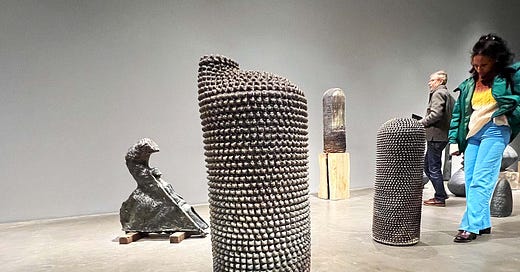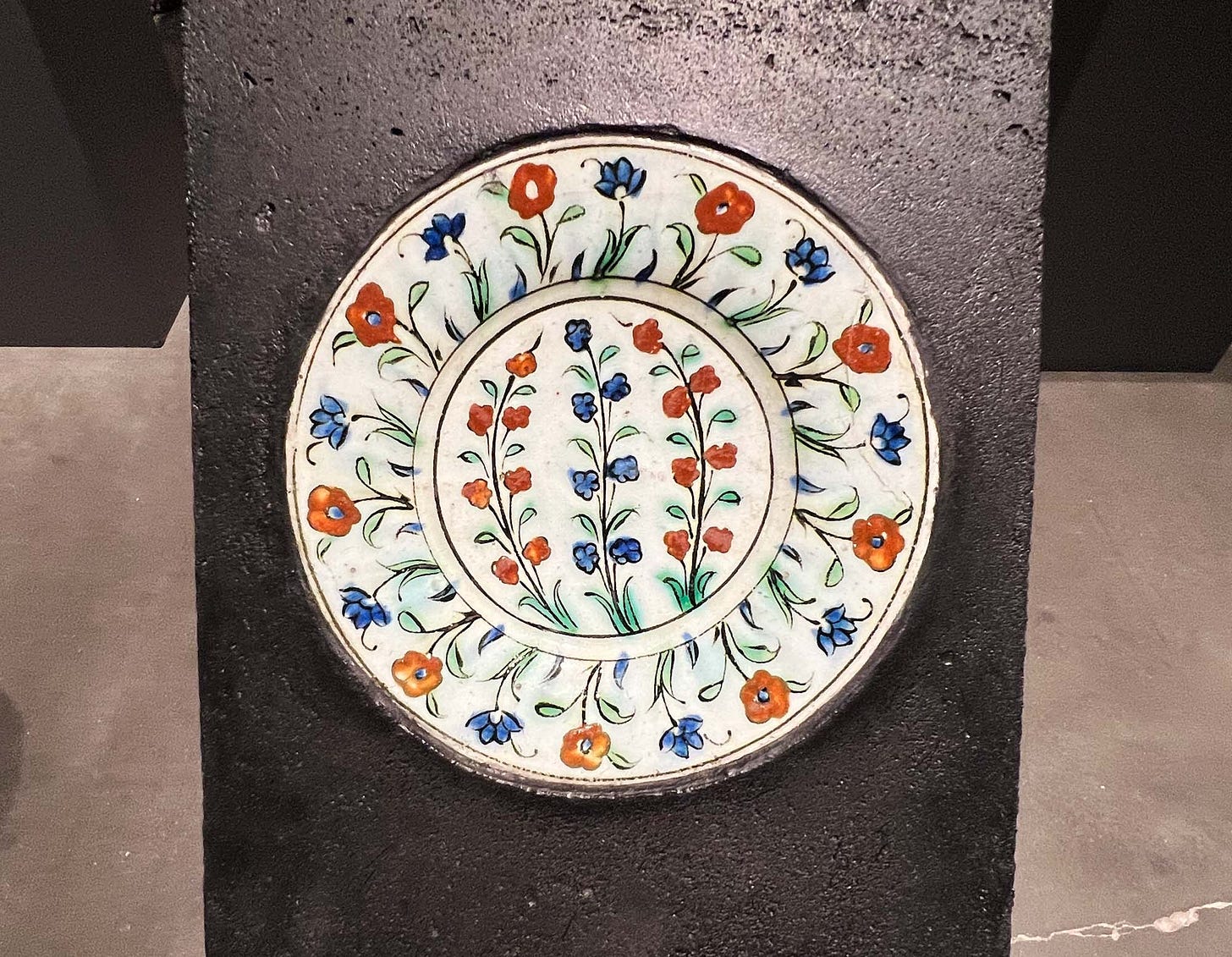In foreground: Black Vessel for the Traces of Our Young Lords and Their Spirits — Vessel #1, stoneware with glaze, 2022
Chicago-based artist Theaster Gates has a long history with clay and at some point in the past few years, built a Japanese-style wood kiln at his studio. I believe this and many of the pieces in the current New Museum show were fired in that kiln, which extends Gates interest in creating an Afro-Mingei style referencing the ceramic and craft traditions from both Africa and Japan. The exhibition, Young Lords and Their Traces, fills 3 floors of the museum and closes this Sunday, February 5.
The third floor of the museum is full of almost 40 sculptures, many of them ceramic and some on bases built from wood from demolished Chicago buildings. The focal point of the installation appears to be this seventeenth-century Iznik dish (present-day Turkey) mounted in a concrete pedestal in a piece called Learning to Read from 2015.
Foreground: Learning to Read, seventeenth Century Iznik dish, concrete, 2015; at left: Nanah, wood-fired stoneware, 2021; at right: Papaw, wood-fired stoneware, 2021.
The entire show is thought provoking, and the 3rd floor installation was especially interesting to me, combing elements such as this plate, references to architect Louis Sullivan, along with sculptures referencing African ceramics that were fired in the Japanese-style Anagama kiln. This bricolage style, as the wall text explains, “recombines pre-existing elements so that individual components become something new or function in ways not initially intended.”
Theaster Gates, Young Lords and Their Traces, is on view through February 5, 2023 at the New Museum in New York City. More here.






